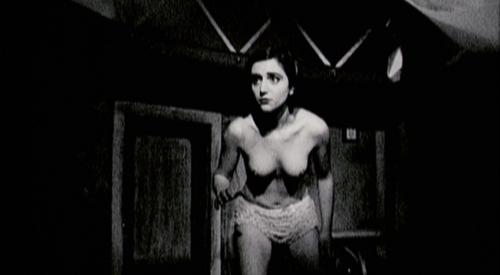Guy Maddin has been one of the most unique voices in cinema for over two decades now. His films are a return to the primitivism of early surrealist filmmaking, succeeding through their own inventiveness in terms of a technical execution that comes only out of necessity. It is because of this that comparisons have been drawn between such varied filmmakers as the Kuchar Brothers, Erich Von Stroheim and Fritz Lang. Though upon an examination of Maddin’s conceptual and thematic concerns it becomes clear that his films communicate in a filmic dialogue all of their own. Maddin’s resources in terms of influence is so diverse that to compare his style and method to any other single film artist is an over simplification.

However, in recent years Maddin has taken up autobiographical material as his primary subject, particularly with the feature Brand Upon The Brain (2006). But his brand of autobiography is neither literally representative of his past nor is it distinctly allegorical, and therefore defies any clear literarily derived labeling; unlike the films of Noah Baumbach and Whit Stillman. Almost in direct opposition of accessible and relatable modes of representation Maddin has employed an aesthetic closer to that of Andrei Tarkovsky’s The Mirror (1974). Where Tarkovsky’s film meanders in a sort of stream of consciousness, Maddin takes that stream but makes it singularly applicable to the construction of his linear narrative, lending his stories a kind of haphazard association to reality while existing in a highly stylized and absurd world of its own much like the cult classic The Forbidden Zone (Elfman, 1980). In terms of Maddin’s orientation to film history, the employment of such a tactic with such an end in mind recalls only the earliest surrealist films of Bunuel and Dali.
Yet, that surrealist influence does not extend so far as Maddin’s visuals that are neither politically or sociologically conscious. His visuals are intuitive constructions designed to emote not to propel a narrative in the traditional Eisensteinian sense. In this way Maddin’s alignment of his visuals is seemingly born out of Stan Brakhage’s early experimental films before the advent of structuralism. But there is a consciousness to Maddin’s composition though that is deliberate and at times classical in the reverence it shows for the films of F.W. Murnau, Carl Theodore Dreyer, and Benjamin Christensen. Christensen in particular seems to have informed Maddin’s depiction of lesbian sexuality in Brand Upon The Brain. The witches’ orgy in Christensen’s Haxan (1922) echoes quite clearly in Maddin’s choice of composition in the scene where Sis and Chance rendezvous for a tryst in a cove.
By utilizing a diverse array of filmic constructs and realigning them in what are aesthetically unrelated forms designed to perpetuate a psychological response over an intellectual one Maddin is able to recreate his youth without any concept of our reality at all. In Maddin’s Kafkaesque nightmare world it is only essential that each image one up the previous image in terms of articulating a single emotion. This is a language unprecedented in contemporary cinema, one with whom I can make no comparison.
